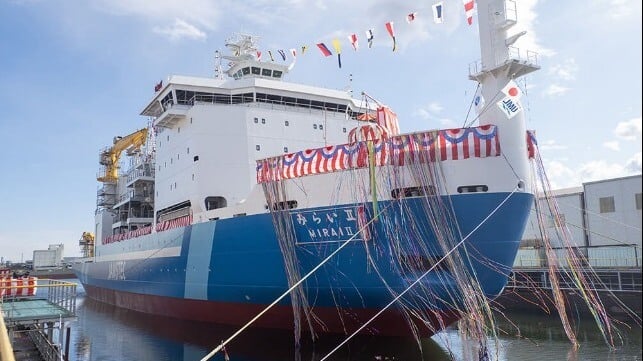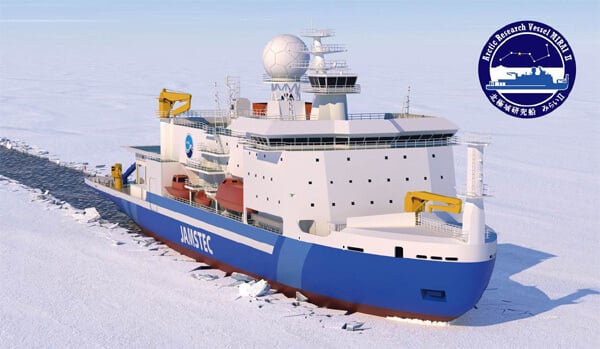Japan Launches Its First Dedicated Ice-Class Arctic Research Vessel

Japan celebrated the naming and launch of its first purpose-built ice-class Arctic research vessel, Mirai II. Construction on the vessel began in 2021 and it represents a significant step forward for the Japan Agency for Marine-Earth Science and Technology (JAMSTEC), which will be responsible for the vessel’s operations.
Japanese officials said as a country adjacent to and affected by the Arctic region, and as one of the world's leaders, Japan has a mission to contribute to resolving the various issues based on scientific evidence that impact the Arctic region. They noted that the Arctic is experiencing rapid environmental changes, such as a decrease in sea ice, which is resulting in increased economic activity in the region. They said that since the issues facing the Arctic are impacting the climate and weather on the entire planet they need to be viewed from a global perspective.
JAMSTEC highlights the vessel will be equipped with equipment and facilities to enable a wide range of observations related to the atmosphere, weather, ocean, sea ice, and more. The design incorporates the maximum extent of Japan’s icebreaking construction technology. The new vessel will be Polar Class 4 capable of continuously breaking 1.2 meter (nearly 4 foot) of flat one-year ice at a speed of 3 knots.

Rendering of the completed research ship
Mirai II will be 13,000 tons with a length of 128 meters (420 feet). It will accommodate a total of 97 people, including 34 crewmembers and 63 researchers.
Considering the aging of the vessel, JAMSTEC reports it has decided to cease the operations of its current marine research vessel Mirai at the end of fiscal year 2025. The current vessel was launched in 1969 designed to become a nuclear-powered cargo ship. She was fueled in 1972, but two years later a controversy emerged due to questions over the vessel’s shielding for the nuclear reactor. It was used as a demonstration vessel and never entered commercial service before being retired in 1992. She was rebuilt as a diesel-powered ship and began operation as an oceanographic research ship in 1997.
The launching of the new vessel took place on March 19 at the Isogo Plant of Japan Marine United Corporation. Delivery is scheduled for November 2026.
To raise awareness of JAMSTEC’s activities and the new Arctic research vessel, the public was invited to submit names for the vessel. Using the public suggestions, the vessel’s workboat will be named Shirokuma, a common word used to describe polar bears, an animal that is being affected by environmental changes in the Arctic.
Japanese officials said they expect once the vessel is in service it will make a significant contribution to advancing research into the global environment, including the Arctic region.
